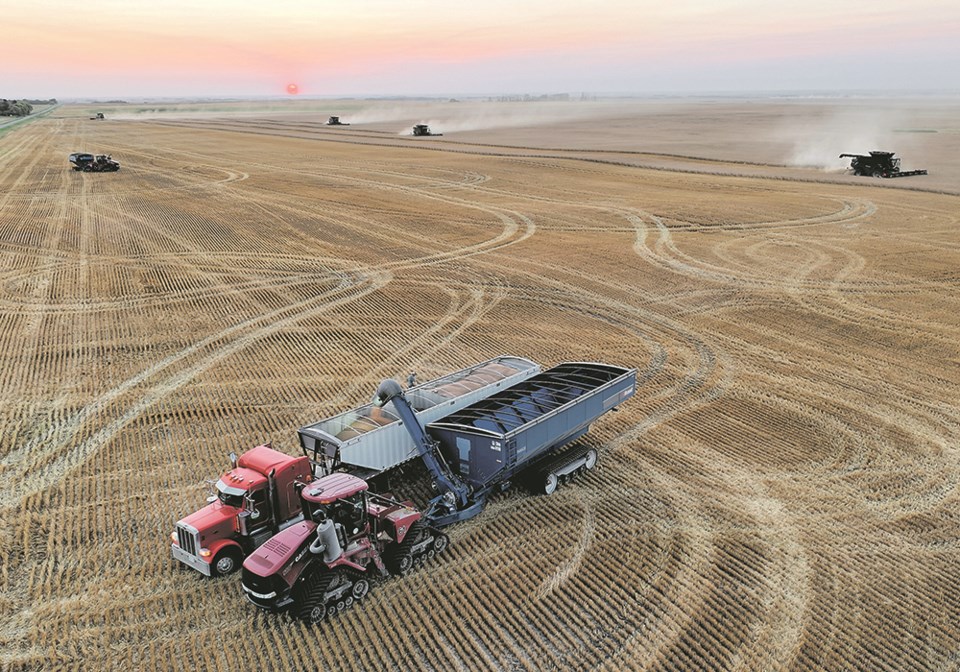Strong commodity prices have been driving increased demand for farmland on the Prairies, with 40 per cent of Saskatchewan farmland leased to feed the global appetite for grains and oilseeds.
“Farmland is just exploding in value here,” says Jeff Stewart, managing director with Re/Max Saskatoon North. “And there’s not a lot of it available, because everyone’s in expansion mode or consolidation mode.”
The lack of available land has pushed lease rates up dramatically in recent years, with most estimates pegging the average annual increase at 10 per cent.
“Some areas are getting well over $100 an acre, and a few year ago $50 an acre was good,” Stewart says, noting that few Saskatchewan families part easily with their land.
“Nobody really sells the family farm,” he says. “Typically what happens is … they’ll hold onto it and just rent it rather than cash out and have a big tax bill. So in the absence of available land to buy, the next best option is to just lease it. And the lease rates are up incredibly.”
This is despite the abundance of farmland in Saskatchewan, the country’s breadbasket so far as wheat and other row crops go. While opportunities abound relative to Alberta and Manitoba, listings are at a historical low.
“It’s definitely the lowest listings we’ve had in the past 10 years,” said Dallas Pike of Hammond Realty in Biggar, Sask.
This in turn has fuelled greater competition for rental properties, as expanding operations look for land.
“The supply of land available to buy is very limited,” said J.P. Gervais, vice-president and chief economist with Farm Credit Canada, which recently undertook an analysis of national farmland rental rate trends. “Demand to buy may have slowed down a little bit … [but] the flip side of that on the rental market is that there’s still very strong demand, and that’s quite constant.”
The analysis by Farm Credit Canada examined a ratio of per-acre lease rates versus purchase prices. A ratio trending lower suggested slower appreciation in rental rates versus land values while an increase in the ratio indicated that rental rates are rising faster than land values.
In Manitoba, the average rent-price ratio has declined since 2020 to 2.4 per cent. This is related in part to a steady acceleration in the growth of farmland values over the period. Values in the Pembina Valley increased 16.1 per cent last year to $5,800 an acre, making it the most valuable dirt in the province.
Land prices increase
In Saskatchewan, where gains in land values accelerated to 14.2 per cent last year, the average rent-price ratio remains below 2020 levels but increased last year versus 2021 as commodity prices strengthened. It now sits at 3.1 per cent. The median land value last year, according to FCC, was $2,500 an acre.
The rise in commodity prices is reflected in a sharp increase in the average rent-price ratio in Alberta last year, from 2.2 to 2.6 per cent even as land values rose 10 per cent after muted growth the previous year. Average land values range between $1,400 an acre in the Peace to $3,500 an acre in southern Alberta.
While the farmland market remains driven largely by farmers, Gervais speculated that 9 to 15 per cent of transactions are to non-farmer owners.
“There’s no denying there’s been, for a number of years now, interest on the investor side,” he said.
This rings true for Mack Macdonald, an agent with Re/Max Crown Real Estate in Regina, who said investor demand for farmland “has been consistently strong.” Per-acre sale prices close to Regina have been setting fresh records for some of the cheapest farmland in Canada, as larger owner-users as well as corporate investors have moved in.
“You’re seeing larger and larger conglomerates buying up farmland,” he said. “It’s a very safe investment, and we haven’t had any restrictions put on it per se like we did with the housing.”
China has been a big source of buyers, as well as Germany and others.
This is likely to continue as the second year of Russia’s war in Ukraine drags on and weather-related issues put the squeeze on production domestically as well as internationally.
A good crop on the Prairies this year will spur activity. Many farmers reaped once-in-a-lifetime returns last year, driving buying activity last winter. A repeat is possible this year if Mother Nature cooperates.
“If there’s an average or above-average crop, it will be competitive this fall, for sure,” Pike said.
Speaking in early May, he said many farmers were just preparing for seeding and it was still too early to tell how the season would pan out. Dry conditions have been prevalent, however, underscored by wildfires across northern growing regions from BC’s Peace to Lloydminster and the Battlefords.



